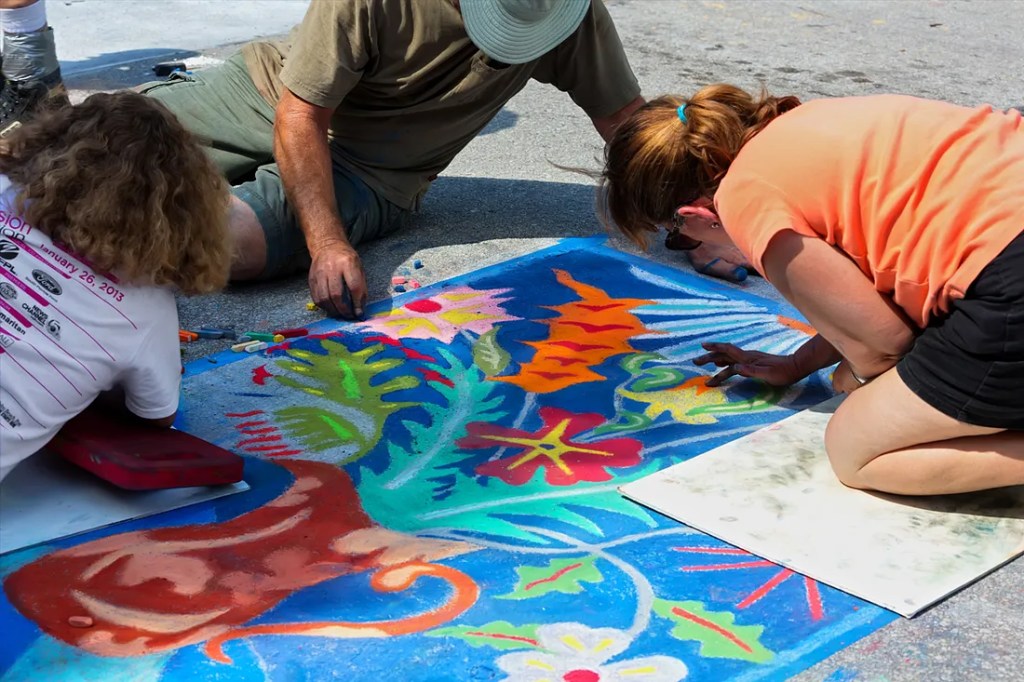
Prior to the onset of the COVID-19 pandemic, unemployment in the United States was at historical lows, and the economy was enjoying a record expansion. But, the headline numbers and positive data trends notwithstanding, a disproportionate number of American families were struggling with low-paying jobs and rising levels of household debt. Now, the pandemic has damaged all sectors of the economy and has led to the highest rates of unemployment since the Great Depression. Low- and moderate-income communities and communities of color in particular have borne the brunt of the economic recession, which has only magnified health and racial inequities and the urgency of building a more equitable economy for all. Arts and culture are central to an equitable recovery, as they highlight local needs not reflected in the data, encourage participation by groups often left out of plans and discussions, and allow many community members to benefit from economic transformation and growth. Here, we highlight resources for identifying arts and culture strategies that may support this vision for the economy during the recovery from COVID-19.
Resources for Supporting Artists and Integrating Arts and Culture in Equitable Development
In January, the New York Fed’s Outreach and Education team convened practitioners and policy influencers to discuss how arts and culture could be included in community development to build a more inclusive and equitable economy. One example discussed at the conference stemmed from an initiative by ArtPlace America, a collaborative of foundations, federal agencies and financial institutions that positions arts and culture as a core sector of community planning. In 2015, ArtPlace launched the Community Development Investments program to fund organizations that embed arts-based strategies to understand how these practices influenced three areas: Organizational Evolution, Collaborative Practice and Community Development Outcomes. One of the participating organizations in the program was a nonprofit leader in Philadelphia’s park system that worked with an arts collective to develop an artist residency program to enhance dialogue about the neighborhood’s legacy and ensure existing community assets are part of future development considerations. Additional examples of arts and culture practices embedded in community development efforts can be found in the Fed’s latest Community Development Innovation Review, from November 2019.
A 2019 report from the NYC Comptroller’s Office noted that New York City’s creative economy employed over 293,000 people, provided $30.4 billion in wages, and was responsible for about 13 percent of the city’s total economic output, or $110 billion in total economic activity. It not only highlighted the financial strength of the sector at the time, but also complemented what has been shown in community practice: that there are public benefits to using arts and culture strategies to build an inclusive and equitable economy. When shelter-at-home orders were instituted in the Fed’s Second District, the New York Fed created a Community Resources hub to help individuals, businesses, and nonprofits find assistance at the federal, state, and city level. Resources geared towards artists and arts-based organizations were included in the hub.
Since the onset of COVID-19, the work of artists and community-based arts organizations has been greatly curtailed given the various measures put in place to prevent the spread of the virus. Theaters, museums, music venues, galleries, and other performance spaces have closed — some temporarily, and others permanently — and public gatherings have been strictly limited. While some programming has moved online, and some efforts have begun to reopen venues to visitors, many cultural institutions continue to experience steep revenue losses, large numbers of artists remain unemployed, and communities are seeing fewer visits from travelers seeking local cultural experiences. A recent analysis from the Brookings Institute about the effects of COVID-19 on the economy estimated losses of 2.7 million jobs and more than $150 billion in sales of goods and services for creative industries across the country from April to July 2020.
Planning Ahead With Our Community Scholar and Partners
Earlier this year, the New York Fed started the Outreach & Education Visiting Scholars program, which invites experts from the community development and education fields to advise and collaborate with New York Fed staff on groundbreaking ideas, programs and analytical tools. Our first scholar is Penelope Douglas, founder of CultureBank and chief strategy and revenue officer at the Yerba Buena Center for the Arts (YBCA). Penelope began her tenure as a scholar by participating as a speaker in several engagements to discuss the importance of artists and community-based arts organizations as influencers and creators of social cohesion in community development efforts and their impact on social determinants of health and equity. Penelope will support the strategic direction of the New York Fed’s outreach efforts with artists throughout the coming year.
The New York Fed will dive deeper into the intersection of arts and culture in community development by collaborating with artists and community partners to better understand financing-related challenges and explore opportunities that strengthen social cohesion in communities. Next week, the New York Fed, together with Upstart Co-Lab, will convene leaders from endowed cultural institutions for a practical orientation to impact investing aligned with institutional mission and values (note that a video recording of this event will be available afterward on the event page). And on November 20, we are hosting “Mobilizing Capital: Artists’ Impact on Community Health and Wellbeing,” a webinar in partnership with YBCA that will engage artists, community investment leaders, and health experts to discuss mobilizing investments in artists. Artists can be champions in unifying communities and improving health and equity outcomes at a time like now, when it is most needed.
This article was originally published by the New York Fed on Medium.
The views expressed in this article are those of the contributing authors and do not necessarily reflect the position of the New York Fed or the Federal Reserve System.










